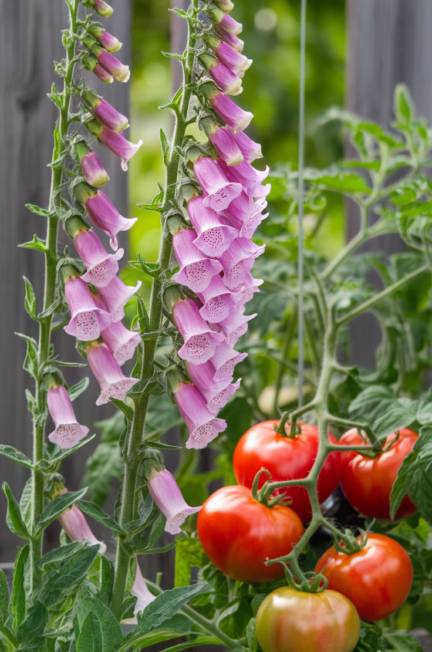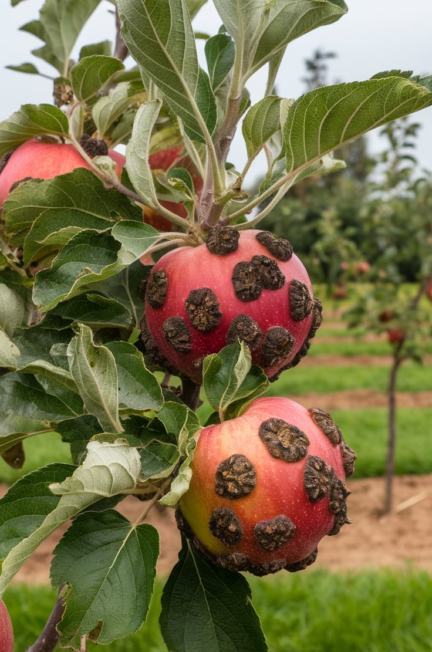Disclosure: This post contains affiliate links, which means we may earn a commission if you purchase through our links at no extra cost to you.
Gardening has always been a mix of patience, curiosity, and a little bit of luck. I remember the first time I planted flowers and vegetables together, not knowing which ones would thrive side by side. To my surprise, the right flower and vegetable pairings not only made my garden look beautiful but also improved plant health and harvest. Over time, I noticed that certain flowers and vegetables grow better together, helping each other by attracting pollinators, repelling pests, and enriching the soil naturally.
My grandmother swore by planting marigolds with tomatoes, and I’ve followed her advice ever since. Watching bees buzz between flower and vegetable pairings, I realized how nature has its own way of balancing things. Whether it’s nasturtiums protecting squash from pests or basil enhancing the flavor of tomatoes, the right combinations can make a huge difference. If you want a garden that’s both productive and full of color, choosing the best flowers to plant with vegetables is a simple way to get started.
Table of Contents
1. Marigold and Tomato

Bright orange marigolds and lush tomato plants make a visually appealing duo while naturally repelling nematodes and aphids. Marigolds release a chemical that deters common tomato pests, reducing the need for pesticides. This pairing enhances both aesthetics and plant health in a vegetable garden.
2. Nasturtium and Cucumber

Nasturtium’s sprawling vines and vibrant blossoms provide a beautiful contrast against cucumber leaves while acting as a natural trap for aphids. They also attract pollinators, ensuring better fruit development. The edible flowers add a peppery zest to salads and garnishes.
3. Lavender and Cabbage

The aromatic scent of lavender confuses cabbage moths, preventing them from laying eggs on cabbage leaves. This companion planting keeps brassicas healthier while attracting beneficial bees. The purple flowers add elegance to vegetable patches.
4. Sunflower and Corn

Towering sunflowers offer natural support for climbing beans and add a golden contrast to cornfields. Their pollen attracts beneficial insects that help control pests. Together, they create a mini-ecosystem that enhances biodiversity.
5. Chives and Carrots

Chives release sulfur compounds that repel carrot flies and enhance the soil’s microbial activity. Their delicate purple blossoms create a beautiful border alongside feathery carrot tops. This pairing improves flavor while protecting root crops from insect damage.
6. Borage and Strawberries

Borage’s star-shaped blue flowers invite pollinators, boosting strawberry yields and improving fruit flavor. The plant’s deep roots enhance soil structure, benefiting shallow-rooted strawberries. Additionally, borage leaves naturally repel common garden pests.
7. Calendula and Broccoli

Golden calendula blossoms not only attract pollinators but also deter cabbage worms and whiteflies that attack broccoli. The petals are edible and can be used in teas or salads. This pairing ensures healthier brassicas while adding bursts of color to the garden.
8. Zinnias and Peppers

Bright zinnias bring butterflies and bees to the garden, increasing pepper pollination and productivity. Their bold colors contrast beautifully with deep green pepper leaves. Additionally, zinnias distract aphids, preventing them from damaging vegetable plants.
9. Petunias and Beans

Petunias add vibrant splashes of color while naturally repelling bean beetles. Their cascading growth provides ground cover, reducing weed competition. The result is a healthier, more productive bean crop with an aesthetically pleasing garden display.
10. Alyssum and Lettuce

Low-growing alyssum creates a delicate floral carpet that suppresses weeds and conserves moisture around lettuce plants. Its tiny blossoms attract hoverflies, whose larvae feed on aphids. This combination promotes healthy, tender lettuce growth.
11. Dill and Cabbage

Dill’s feathery foliage attracts beneficial wasps that prey on cabbage worms, reducing damage to brassicas. Its aromatic presence also enhances cabbage flavor when grown nearby. This pairing keeps the vegetable bed naturally pest-resistant.
12. Chamomile and Onions

Chamomile’s tiny white and yellow flowers attract pollinators while its presence improves onion flavor. The plant releases antifungal compounds into the soil, promoting overall plant health. Its delicate blossoms also add a charming touch to kitchen gardens.
13. Rosemary and Beans

Rosemary’s strong scent deters common bean pests, reducing the risk of infestations. This evergreen herb also provides structural contrast against the vining growth of beans. Together, they create a fragrant and practical pairing in the garden.
14. Yarrow and Spinach

Yarrow’s delicate, clustered flowers attract predatory insects that control aphids and caterpillars on spinach. The plant improves soil health, making it an excellent companion for leafy greens. Its tall stems contrast beautifully with low-growing spinach plants.
15. Bee Balm and Squash

Bee balm’s vivid red blossoms draw pollinators, ensuring abundant squash production. The plant’s aromatic leaves also repel squash bugs. This pairing maximizes both vegetable yield and garden beauty.
16. Tansy and Potatoes

Tansy’s yellow flowers act as a natural deterrent for Colorado potato beetles. Its deep roots improve soil composition while its nectar feeds beneficial insects. Growing tansy near potatoes reduces the need for chemical pest control.
17. Cosmos and Eggplant

The whimsical appearance of cosmos enhances the aesthetic appeal of eggplant patches while luring pollinators. Their tall, feathery stems contrast beautifully with broad-leaved eggplant plants. This pairing supports fruit development and adds a touch of charm to vegetable gardens.
18. Echinacea and Kale

Purple echinacea blossoms attract butterflies and bees, improving kale’s productivity. The plant’s deep taproots break up compacted soil, enhancing water absorption. This combination fosters healthier brassicas with minimal maintenance.
19. Daisies and Brussels Sprouts

Daisies provide ground cover that suppresses weeds and attracts beneficial insects that protect Brussels sprouts. Their cheerful white petals contrast against deep green foliage. This pairing makes vegetable beds visually appealing while enhancing pest resistance.
20. Foxglove and Tomatoes

Foxglove’s bell-shaped flowers bring height and elegance to tomato beds while naturally repelling aphids and spider mites. Their presence also attracts pollinators, ensuring better fruit set. This striking contrast of blooms and foliage adds dramatic beauty to the garden.
21. Poppies and Asparagus

Poppies introduce bright splashes of red to asparagus beds while deterring harmful soil nematodes. Their shallow roots do not compete with asparagus, making them a harmonious companion. The combination creates a visually rich and functional pairing in the garden.




